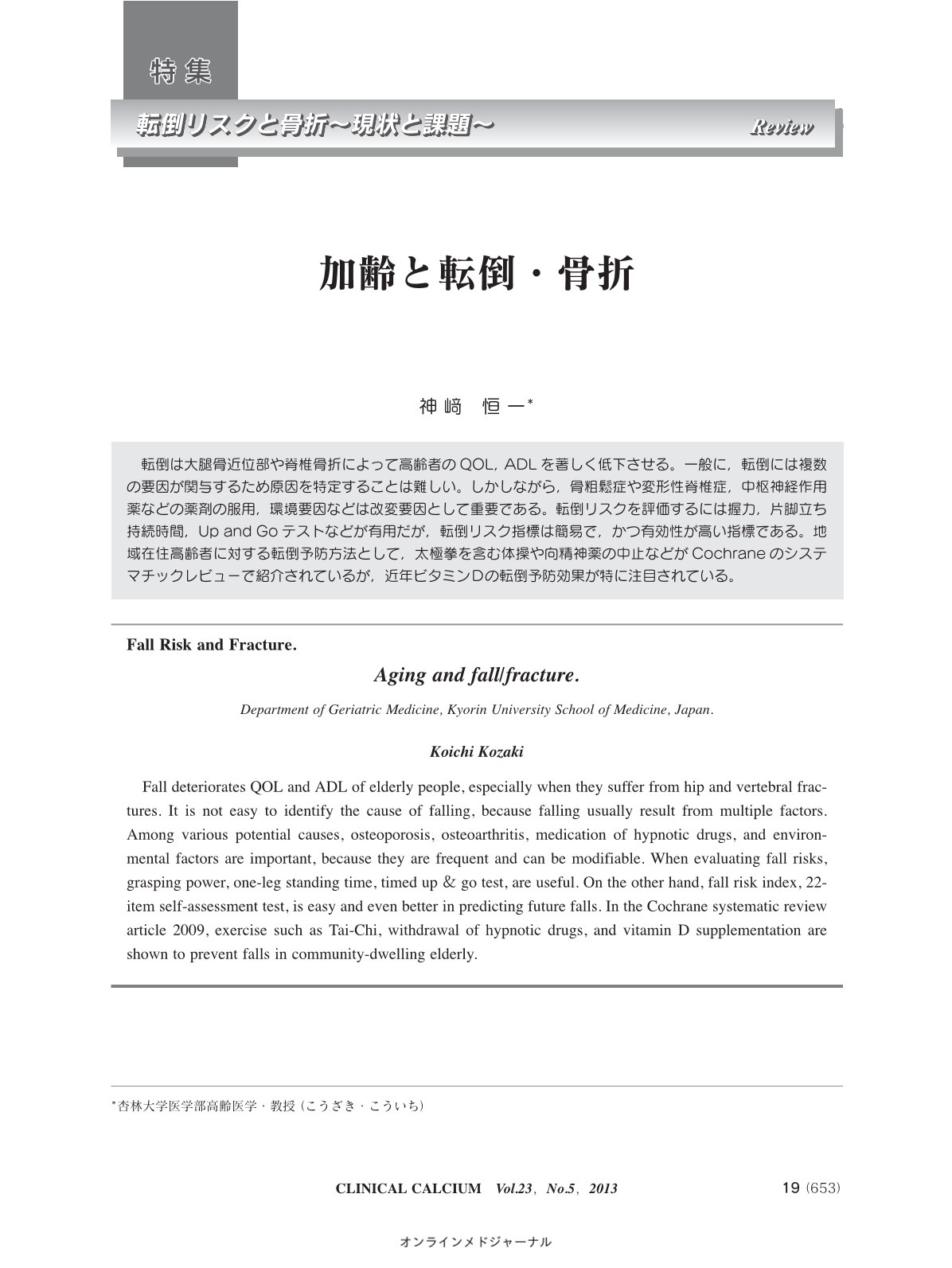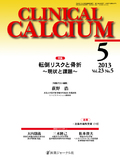Japanese
English
- 有料閲覧
- Abstract 文献概要
- 1ページ目 Look Inside
- 参考文献 Reference
転倒は大腿骨近位部や脊椎骨折によって高齢者のQOL,ADLを著しく低下させる。一般に,転倒には複数の要因が関与するため原因を特定することは難しい。しかしながら,骨粗鬆症や変形性脊椎症,中枢神経作用薬などの薬剤の服用,環境要因などは改変要因として重要である。転倒リスクを評価するには握力,片脚立ち持続時間,Up and Goテストなどが有用だが,転倒リスク指標は簡易で,かつ有効性が高い指標である。地域在住高齢者に対する転倒予防方法として,太極拳を含む体操や向精神薬の中止などがCochraneのシステマチックレビューで紹介されているが,近年ビタミンDの転倒予防効果が特に注目されている。
Fall deteriorates QOL and ADL of elderly people, especially when they suffer from hip and vertebral fractures. It is not easy to identify the cause of falling, because falling usually result from multiple factors. Among various potential causes, osteoporosis, osteoarthritis, medication of hypnotic drugs, and environmental factors are important, because they are frequent and can be modifiable. When evaluating fall risks, grasping power, one-leg standing time, timed up&go test, are useful. On the other hand, fall risk index, 22-item self-assessment test, is easy and even better in predicting future falls. In the Cochrane systematic review article 2009, exercise such as Tai-Chi, withdrawal of hypnotic drugs, and vitamin D supplementation are shown to prevent falls in community-dwelling elderly.



